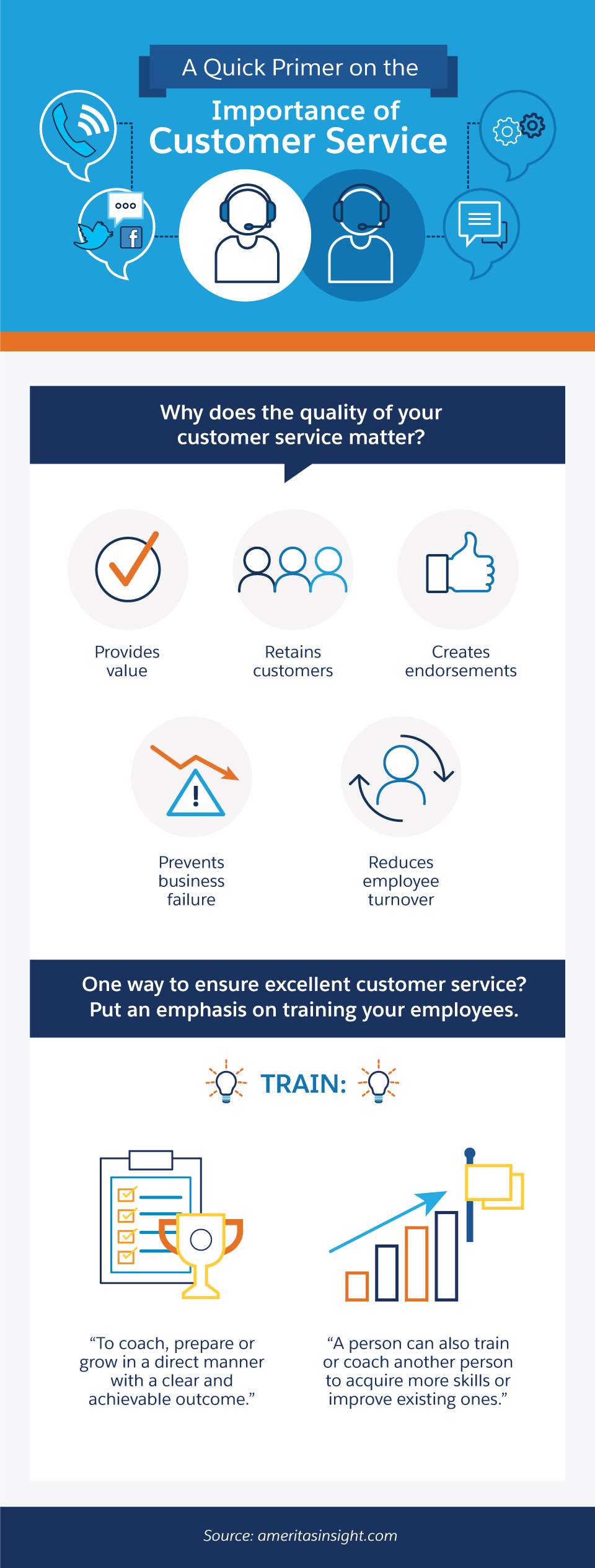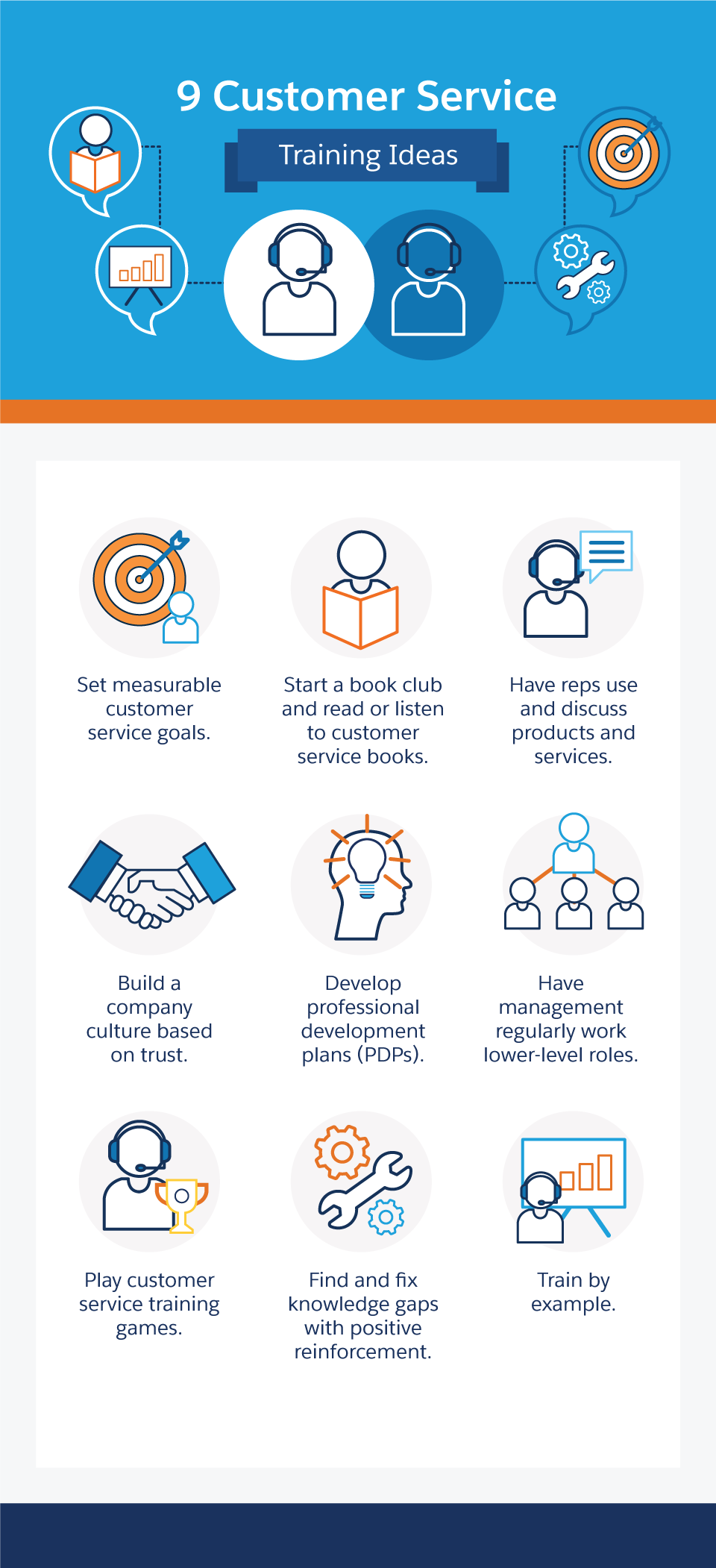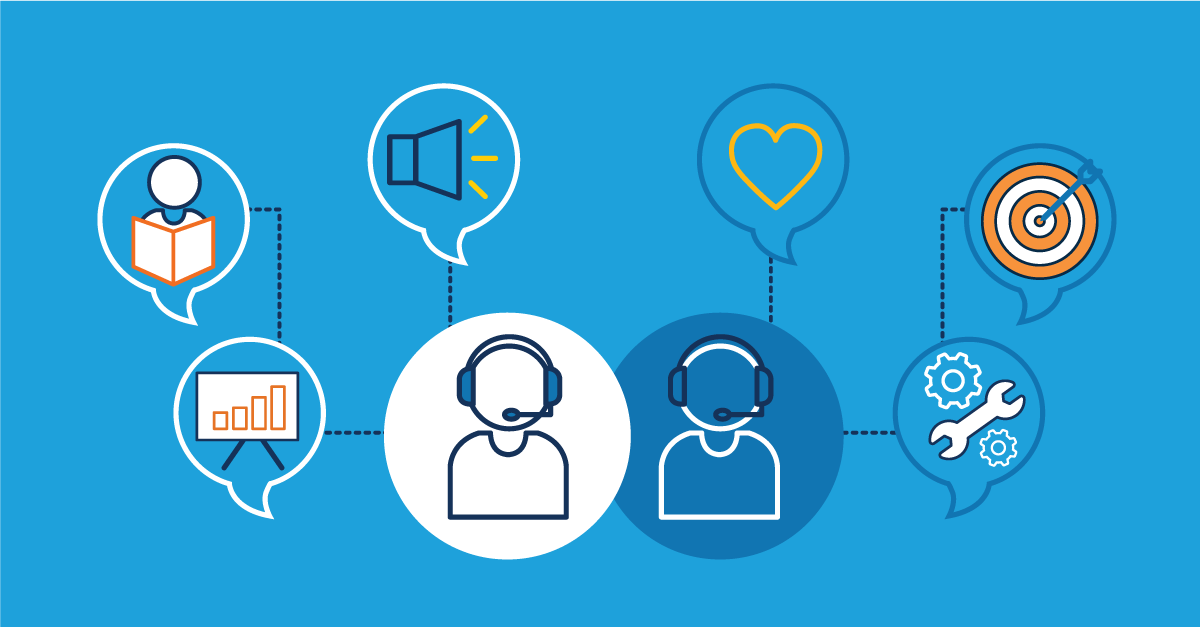“The customer is always right.” This is a credo that almost everyone becomes familiar with before they’ve finished primary school. The idea is supposed to represent that no matter what, your customer’s satisfaction is the highest priority for any organization that wants to be successful.
You can find scores of studies that bear out the fact that it’s far more expensive to find new customers than it is to retain the customers you already have. Further, some posit that the majority of customer turnover is preventable with better customer service. Therefore, it stands to reason that training your customer service staff could be one of the most affordable ways to protect, and even improve, your revenues and profitability.
Disruption Can Fuel Customer Service — and Satisfaction
In today’s business climate, a powerful buzzword is disruption. Innovators aren’t always looking at new technology to drive business; they’re looking at how to make the experience easier and more streamlined for the customer. Why interact with a tired cashier to place an order that may be entered incorrectly, when you can use a digital kiosk, pay with a digital service, and only interact with a team member to swap a ticket for a tray of food?
That’s just in an existing business. What about when a new business comes along and disrupts an entire industry? People have long disliked using taxicabs: possible scams, dangerous driving, opaque pricing, and no recourse if you had a negative experience. This led people to embrace ride-sharing disruptors, which made this type of transportation feel more customer-focused. Disruption is causing massive churn and turnover in the Forbes 500 at unprecedented rates. Ninety percent of the firms on the list in 1955 were gone by 2017, and the trend continues at exponential rates. At the current churn rate, about half of the S&P 500 firms may be replaced within the next decade.
A Quick Primer on the Importance of Customer Service
- Why does the quality of your customer service matter?
- Provides value.
- Retains customers.
- Creates endorsements.
- Prevents business failure.
- Reduces employee turnover.
- One way to ensure excellent customer service? Put an emphasis on training your employees.
- Train:
- “To coach, prepare or grow in a direct manner with a clear and achievable outcome.”
- “A person can also train or coach another person to acquire more skills or improve existing ones.”
- Train:

Customer-Centricity Fuels Longevity
Still, some of the biggest success stories have been around for a while. Two businesses that are at the forefront of every customer service conversation are Zappos and Southwest Airlines. Zappos was acquired by internet retail giant Amazon in 2009. Today, it’s estimated that Zappos produces in excess of $2 billion in revenues annually. The secret of its immense success? Customer-centricity drives the company, as evidenced by the letter from the CEO when Zappos was acquired. Tony Hsieh, in a quick question and answer section, wrote, “Will we continue to do the special things we do for our customers? Are our customer service policies going to change? Just like before, that's completely up to us to decide.”
As for Southwest Airlines, the importance they place on customer service, especially in an industry where virtually every change or innovation is customer-unfriendly, routinely helps it shine. The airline just celebrated its 46th straight year of profitability, with earnings in the fourth quarter of 2018 beating estimates. In the airline industry, one of the most critical metrics that determines how an airline is doing economically is the Revenue Per Available Seat Mile (RASM). The RASM is calculated by dividing operating income by available seat miles. Generally, the higher the RASM, the more profitable the airline. Southwest is generally in the top three, if not first, in RASM among U.S. carriers, and has almost double the operating margins of its competitors.
Southwest founder Herb Kelleher believed his company would only be successful if it focused wholly on a positive customer experience. In 1998, he wrote, “Airlines go up and down with the cycles in the economy because one of the first things that people cut during difficult times is flying. Customer service is a large component of Southwest’s winning formula.” Indeed, Southwest has a rabid fanbase that won’t think of flying on another airline.
Use Customer Service Training Methods that Align with Your Company’s Values
What these examples show is the importance that a successful company should be placing on customer service, and that customer service managers should immediately look for low-hanging fruit when trying to optimize or improve their customer service training modules. Customer service clearly sets the tone for a positive customer experience, high customer satisfaction, excellent customer retention, and even increased employee satisfaction.
In order to determine the best training tactics and strategies for your team, you first need to understand your goals. What is it that you’re trying to accomplish with your product or service? If you’re a funeral home or health care facility, for example, perhaps your staff needs to have a deep ability to empathize with your customers and be sensitive to their needs and emotions. However, if you sell intricate devices like high-end cameras, your staff may need to be well-trained on the complexities of the machinery, and the impacts that one lens may have on a shot, or the settings on the camera being used. You may need to be an expert in using the camera to be a successful representative.
In either case, your empath or your expert will only excel in customer service if they understand how to actively listen to your customers. Whether a customer needs to vent about their issue or fully articulate the details around it, there are two big challenges faced by successful customer service organizations:
- Customers have to re-explain issues.
- Customers have to spend too much effort to resolve their issues.
If your customer service representative can actively and effectively listen, issues are resolved more quickly, more accurately, and more effectively, resulting in the best possible outcome.
Empathy is Your Customer Service Training Secret Weapon
- Per Psychology Today: “Empathy is the experience of understanding another person's thoughts, feelings, and condition from his or her point of view, rather than from one's own.”
- There are a few ways to train and build empathy.
- Truly listen to people. Pay attention to body language, tone of voice, hidden emotions, and context.
- Don’t interrupt. Don’t dismiss concerns offhand or rush to give advice. Don’t change the subject. Allow people their moment.
- Learn how to read non-verbal communication. This goes hand-in-hand with listening.
- Use people’s names — and spell and pronounce them correctly. Try out and use different methods for better remembering names.
- Be fully present. Don’t check email, look at your watch, or take phone calls when someone’s trying to talk to you. Put yourself in their shoes and take a personal interest in others.
- Encourage and give genuine recognition and praise. Pay attention to what people are doing and make an effort to give positive reinforcement. Do so in a way that meshes with a person’s personality: An introvert, for example, may prefer an email or less public way of being recognized.

Create or Update Your Customer Service Training Strategy
After you determine your goals, you need to develop a training strategy. Your people must understand the pipeline your products and services go through to reach your end customer. Perhaps they don’t need to understand the chemistry involved in producing the flavors of your products, for example, but maybe they should know how they’re packaged, stored, and delivered. Training customer service reps on how your company works can help give them insight on how to best address issues that may arise.
Instill Core Values
Part of your training strategy should be to help employees understand and drive home your organization’s core values. You’ll hear this brought up with any organization that’s known for its customer service, including Southwest Airlines. Staff should know what the organization stands for and, other than profit, why it exists. Help them buy into the mission of the organization and live it with a passion that’s conveyed to customers. If your customer-facing employees believe in your company and its offerings, they are armed with the passion of the faithful. It’s hard for a customer to be unaffected by the attitude of the employee with whom they’re communicating.
Embrace Autonomy
You really find separation between good and great customer service teams in the level of empowerment they have to resolve a customer’s issue. The Ritz-Carlton, for instance, empowers their employees to assist any guest by allowing them to spend up to $2,000 to do so. Each employee, “at every level,” is trusted with the decision-making ability to resolve a guest’s issue without going to leadership for approval. This has two significant impacts, both for the guest, and for the employee.
- The guest is taken care of quickly and effectively, or provided a beautiful and memorable experience — or both.
- The employee knows they are trusted to be wise and honest, and that they are important to the organization.
Zappos’ customer service representatives are similarly empowered to make decisions without consulting with management. Customer service reps are trusted to make the right call, which leads to an effective and efficient experience for the customer.
Don’t Fear Levity
Even if your staff loves your product and your company, some people like a little fun in their work to push them to try harder and achieve recognition for meeting core metrics. There are several companies dabbling in gamification of customer service, with some positive results. There seems to be some stratification with older generations not agreeing with this approach, but various challenges in closing tickets, taking calls, or meeting other goals can result in various rewards or incentives. Gamification is proving to be an effective tool for many types of workplace productivity, and it’s already making its way into customer service.
9 Customer Service Training Ideas
- Set measurable customer service goals.
- Start a book club and read or listen to customer service books.
- Have reps use and discuss products and services.
- Build a company culture based on trust.
- Develop professional development plans (PDPs).
- Have management regularly work lower-level roles.
- Play customer service training games.
- Find and fix knowledge gaps with positive reinforcement.
- Train by example.

9 Ideas for Customer Service Training
No matter what industry you’re in, your company can use and benefit from these customer service training activities.
- Identify and set effective, measurable customer service goals. Ask for and value feedback from all members of your team.
- Start a book club and give team members time during their days to read or listen to customer service books. Discuss chapters at regular intervals.
- Regularly hold an all-hands meeting in which reps freely use a specific product or service, discuss what they’ve learned and experienced, and give feedback to managers.
- Infuse your company culture with trust by implementing open door policies, autonomy, script-free responses, and judgment-free question-and-answer sessions.
- Create a professional development plan, or PDP, for every employee, regardless of their level.
- Require each member of management to regularly take on lower-level roles, as Southwest Airlines does. Its officers “act as a reservations agent, load baggage, dispatch airplanes, or whatever is required, and report back to [the CEO] on what they did, what they found out, and what they did to improve the job.”
- Try playing a customer service training game, such as “Let Me Tell You What I Can Do,” or “Explain Yourself.”
- Quiz employees on their company and product knowledge to find and fix gaps. Provide prizes for correct answers and keep the experience positive.
- Train by example using customer service training videos, interactive simulations, and role playing.
No Matter How You Do It, Make Customer Service Training a Priority
Regardless of the tools or culture you use to train your staff into the high-performing machine you envision, there is no doubt that when done right, work becomes your calling, not your career. When your customers come calling, and they can feel your excitement and appreciation for their business, they will return that warmth with a similar zeal and continue adding to your bottom line.
Share "9 Customer Service Training Ideas You Can Try Right Now" On Your Site




